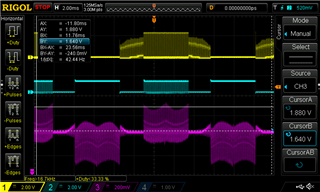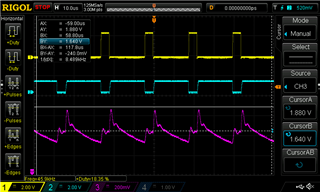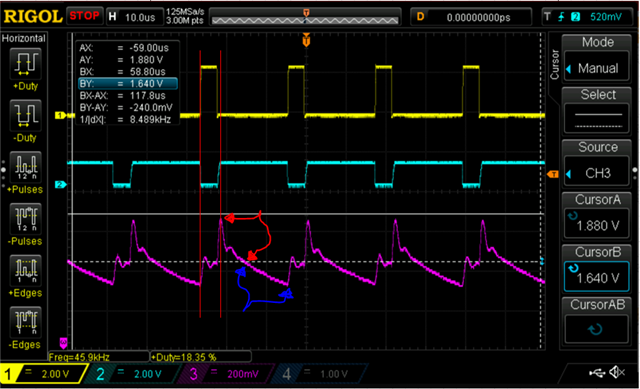Hello, I have a BOOSTXL-DRV8323RS interfaced with a Nucleo board, driving a BLDC motor. It is set to 1X PWM mode and runs smoothly in either open- or closed-loop control.
I'm now working on current sensing but the ISEN output waveform is different from the expected quasi-square wave. Any ideas on possible reasons for this/potential fixes? Thanks in advance
Displayed below are MOTA, GLA, and ISENA




